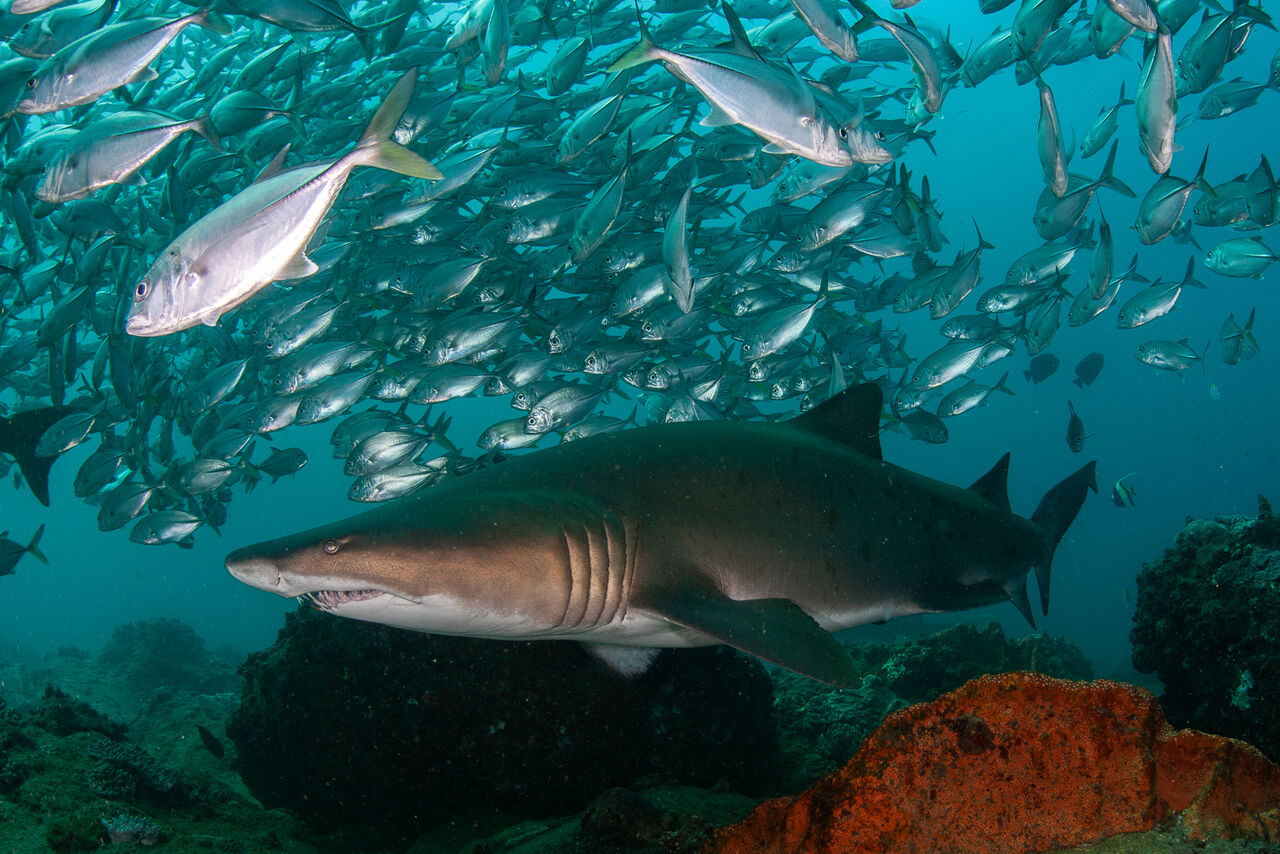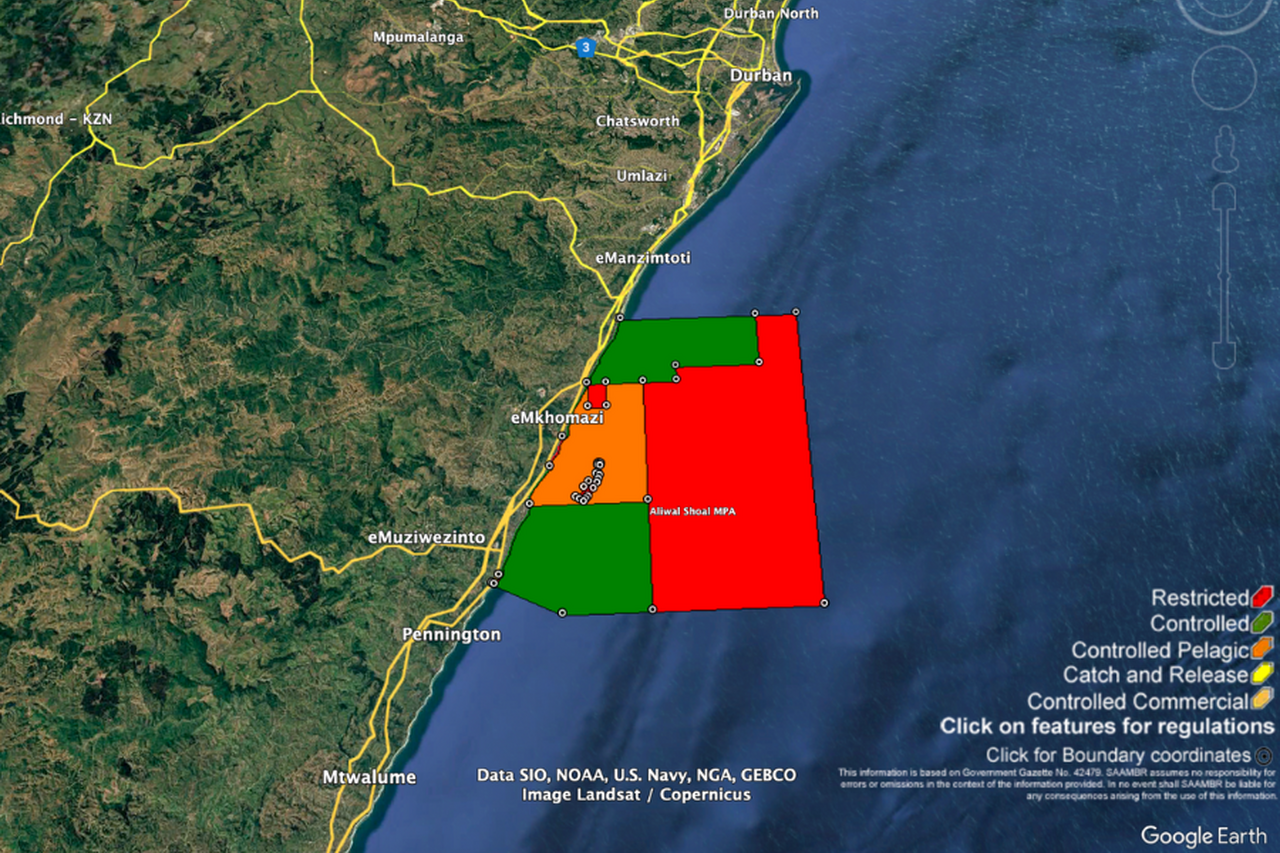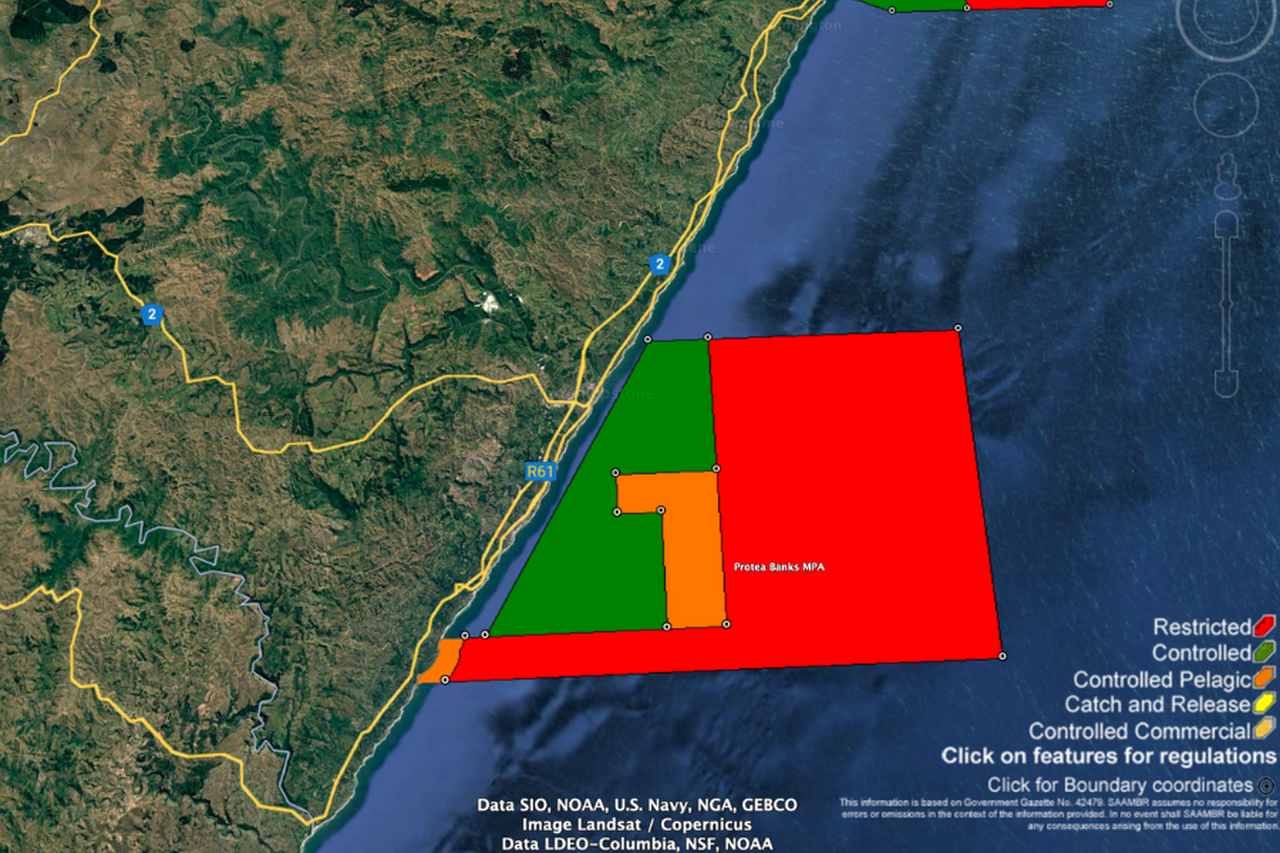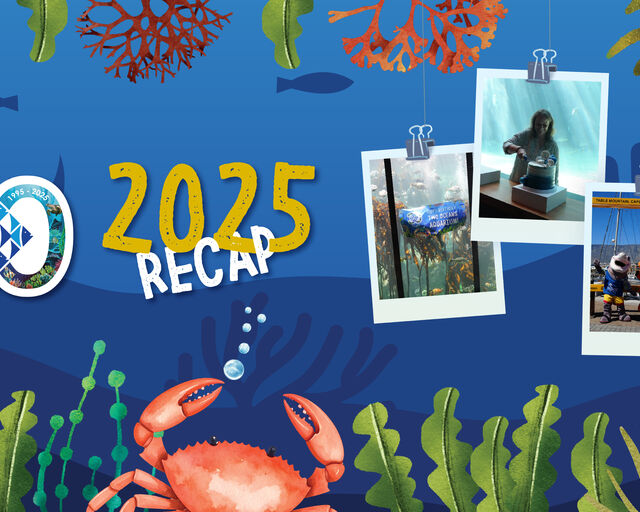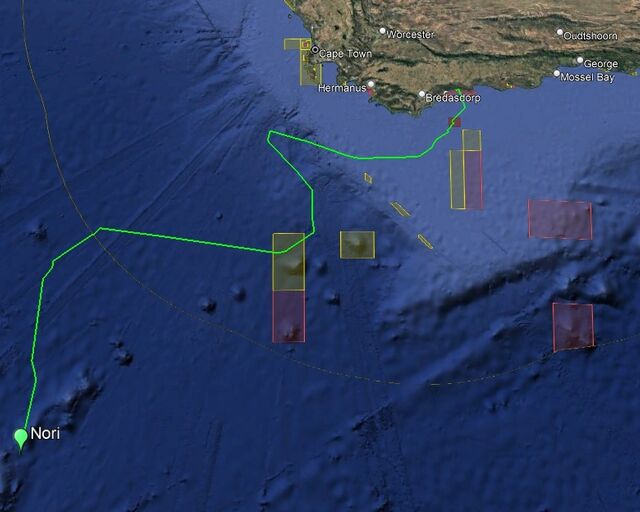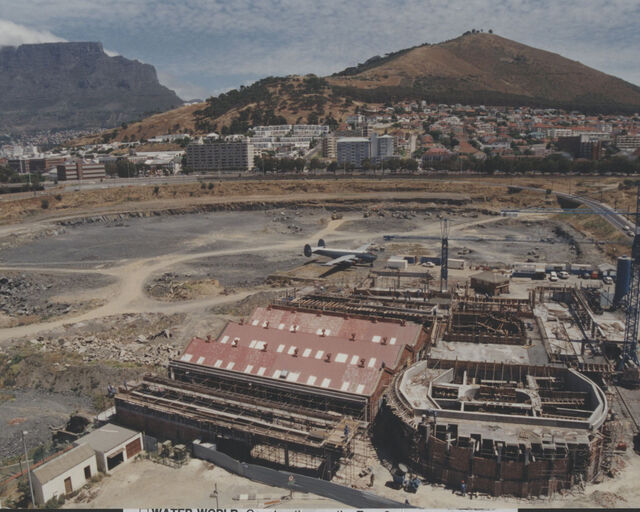With Marine Protected Areas Day coming up, we’re shining a light on the way that sharks use these protected ocean spaces.
South Africa has 42 beautiful Marine Protected Areas (MPAs), many of which are specially designated for the protection of our shark species. Believe it or not, South Africa has more than 30 species of sharks that call our waters home. These species range from hammerhead sharks on the east coast to puffadder shysharks on the southwest coast.
In particular, the Aliwal Shoal, iSimangaliso Wetland Park, and Protea Banks MPAs have become well-known as shark hotspots. These MPAs are vital safe spaces for vulnerable shark species, as well as key breeding and nursery areas. Furthermore, with the increase of eco-tourism, like scuba diving, over the past decades, these MPAs have also generated valuable income for their areas.
How do MPAs benefit sharks?
Sharks are more vulnerable than many realise. Most species have relatively slow rates of reproduction and are slow to reach sexual maturity, leaving years of being susceptible to threats of fishing, entanglement in ghost fishing gear, and habitat degradation. With typically cleaner water, lower fishing pressure, and healthier ecosystems, MPAs provide much-needed safe spaces for sharks to mate, give birth, and congregate.
In many MPAs across South Africa, “no-take” and restricted zones offer increased protection for species within them. This means prey species flourish, bycatch is reduced, and shark populations are supported.
Let’s look at two of the main ways that sharks use MPAs…
MPAs as breeding grounds
Aliwal Shoal MPA is considered a crucial breeding and aggregation habitat for multiple shark species, including ragged-tooth, Zambezi, tiger, and hammerhead sharks.
The MPA, located on the South Coast of KwaZulu-Natal, includes no-take and restricted zones. This newly expanded area (roughly 670km2) continues to protect the main part of the Aliwal Shoal reef, which is popular with divers. The extension protects deeper offshore reefs and the upper slope to depths of 2 200m.
Aliwal Shoal is one of the biggest aggregation sites of ragged-tooth sharks. In winter every year, these sharks migrate to the MPA to mate. It is around this time that the shark diving tourism in the area peaks, with tourists gathering to witness the beauty of these freckled sharks in great numbers.
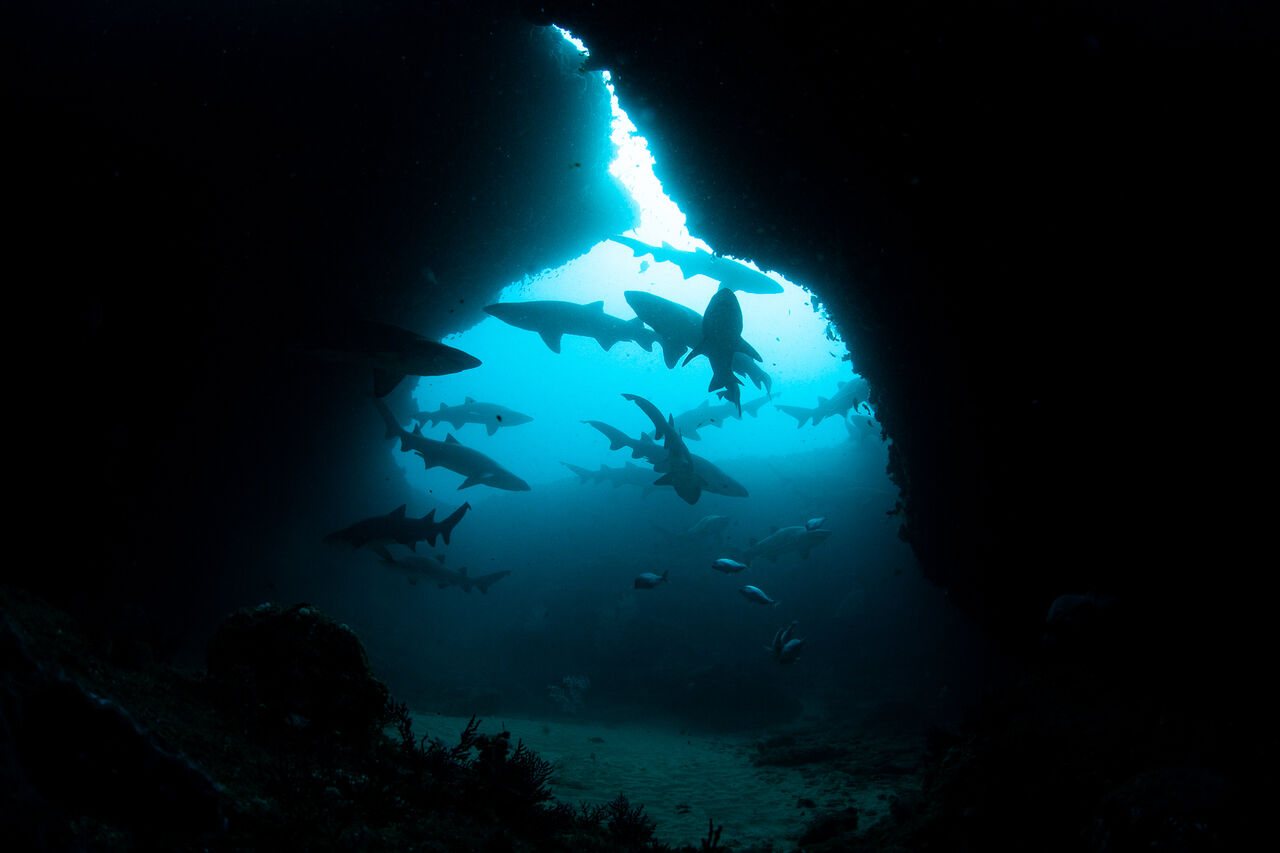
As well as being a breeding site for raggies, Aliwal Shoal is also home to white-tip reef sharks, migrating hammerheads, Zambezi sharks, and tiger sharks.
Later in the year, iSimangaliso MPA plays a vital role for pregnant ragged-tooth sharks. They journey along the coastline to KwaZulu-Natal’s north coast, where they will spend up to five months gestating in the iSimangaliso MPA. There, the warm waters and abundant coral reefs make for a safe and food-rich gestation area.
The iSimangaliso MPA is also the only one in South Africa where silvertip sharks, grey reef sharks, white-tip reef sharks, and whale sharks occur in the same place. In fact, it is considered an area of significance for 11 shark species.
Ragged-tooth sharks are just one example of how shark species use MPAs for breeding. Many MPAs are vital nursery areas – for example, juvenile hammerhead sharks gather in the uThukela Banks MPA.
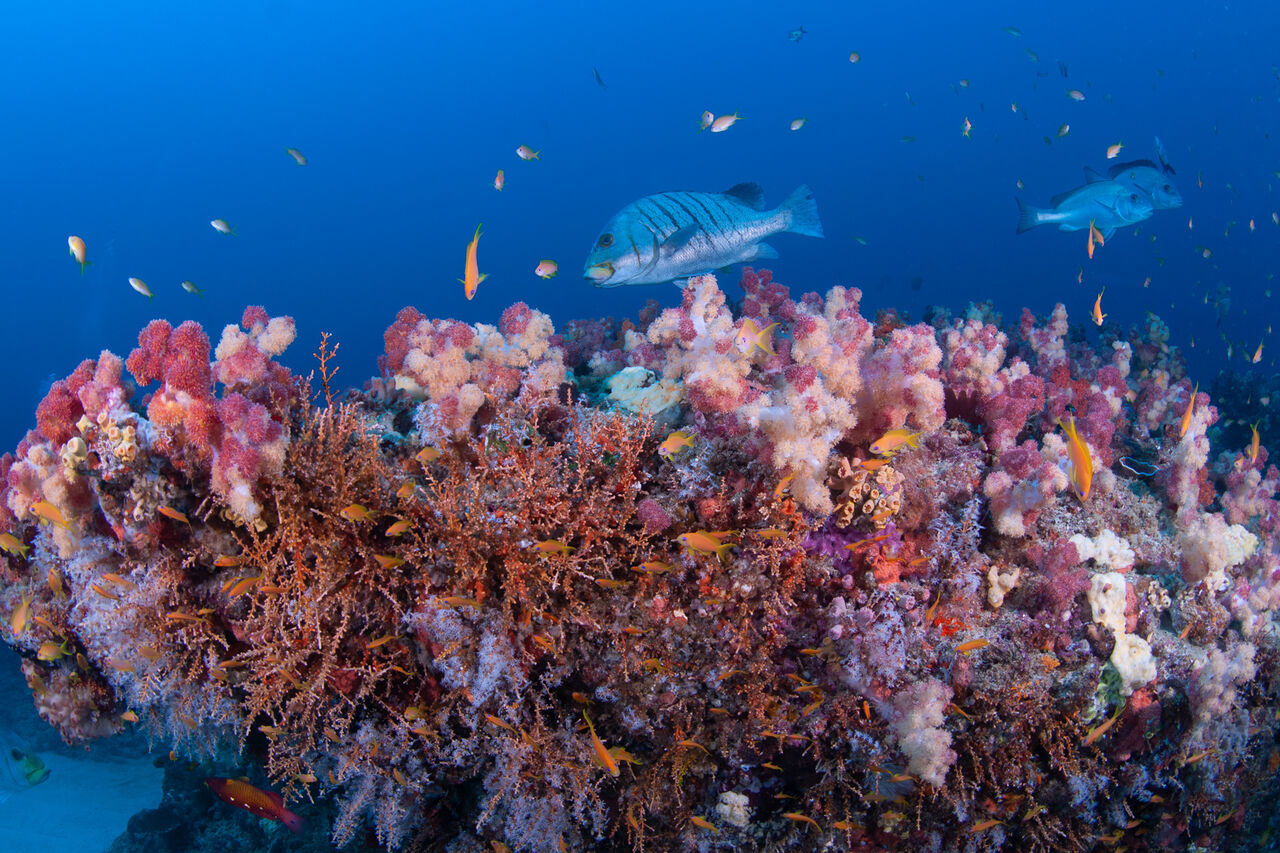
MPAs as safe spaces
The Protea Banks MPA is known as a shark sanctuary. With a sprawling 1 200km2 of protected ocean, the MPA is home to diverse seaweed beds, deep water ecosystems, and a variety of sponges and corals.
Due to the protection of these extensive offshore reefs, prey species thrive and attract sharks (particularly ragged-tooth and hammerhead sharks) to the MPA. The Protea Banks MPA is home to seven shark species and is also the only place in the world where aggregations of giant guitarsharks have been seen. Furthermore, the famous Sardine Run passes through the Protea Banks MPA. This phenomenon hugely boosts tourism and generates economic incentives to protect the sharks as their presence in the Sardine Run is a huge drawcard.
Many MPAs in South Africa provide similar safe spaces for our sharks. Blue sharks are protected in the Orange Shelf Edge MPA, while mako sharks call the Southwest Indian Seamounts MPA home.
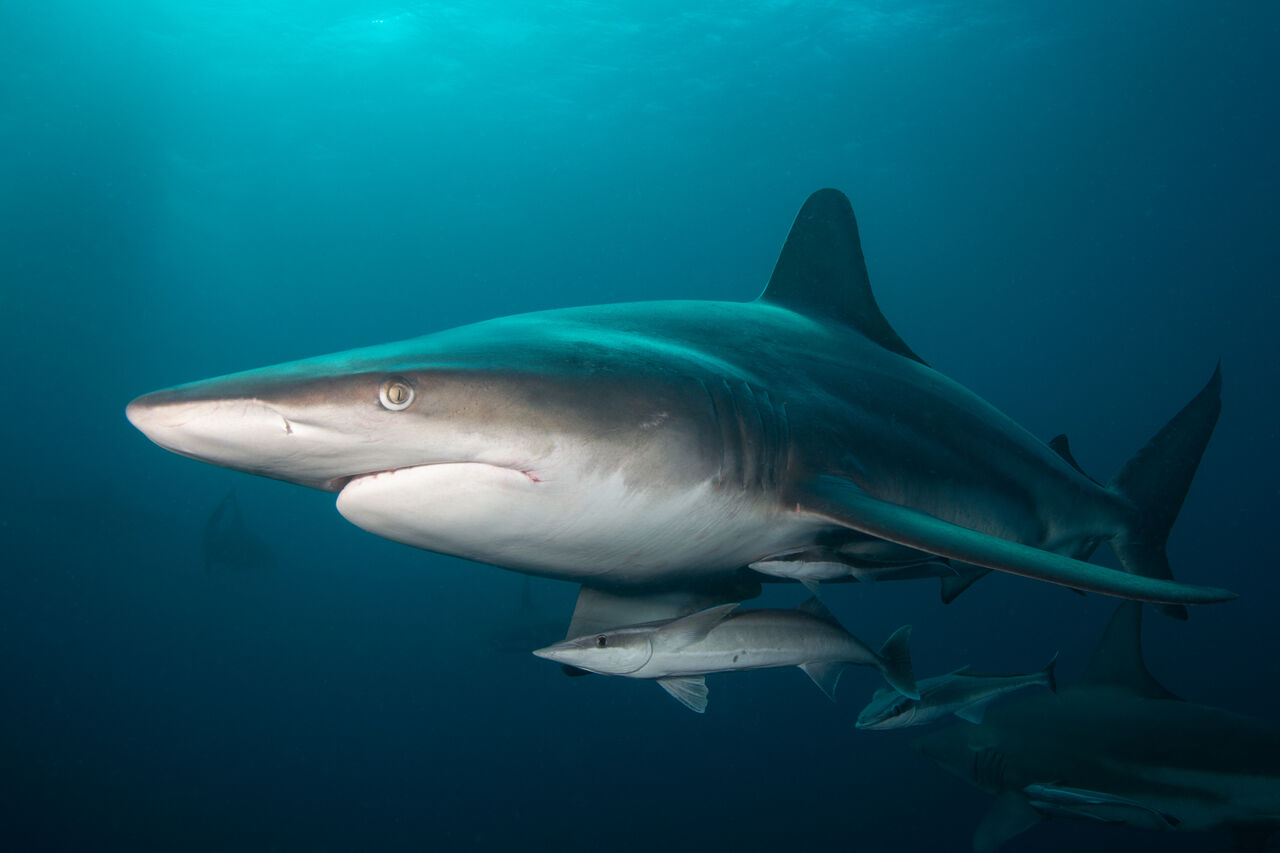
Sharks are a vital part of our marine ecosystems, and our Marine Protected Areas are one of the keys to protecting their future.
Related News
Sign up to our Newsletter
Receive monthly news, online courses and conservation programmes.
